Gouki and Silber demonstrated the price that had to be paid to be two of the best fighting game bosses ever. They were willing to fight to the death at each and every encounter. Very few fighting game characters were ever written with that level of intensity. The pair were willing to kill in order to achieve their goals. The Dictator and the other bosses were willing to do the same but Gouki and Silber did not have a different agenda. They did not want to rule the world or even a small nation. They simply wanted to be the greatest fighters that had ever lived. By their definition the most lethal art proved who had true power. This took them out of the realm of bosses and made them symbols of evil.
The lack of respect that the two villains had for human life extended to themselves. These boss characters were willing to enter a fight even if the numbers were against them. They were willing to punish their own bodies, cripple their own bones and deform themselves for the sake of mastering killing strikes. Gouki and Silber had powerful bodies but gruesome expressions. Their faces were a mockery of the humanity they left behind. In the official character are they almost looked like they were wearing masks. Their features carved by a life of constant battle. The scars that Silber wore were clearly visible but Gouki's were hidden, they were scars on his soul. When Gouki killed his own master and brother he had done damage to himself that he would never be able to undo.
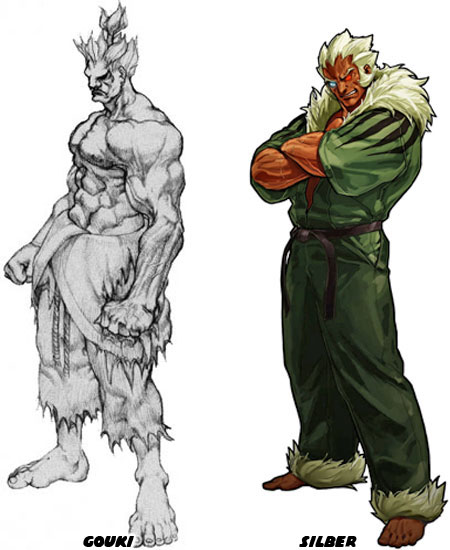
The pair had achieved a level of power that few could ever hope to reach in canon. Their training was so hard that no opponent was strong enough to spar with them and live to talk about it. The two had turned to nature to push themselves further. Instead of breaking rocks and trees they began fighting predators from the animal kingdom. This legend was taken from reality itself. Mas Oyama had travelled the world, defeating masters of just about every fighting style. When he ran out of people to fight he turned to animals. He would put on demonstrations of his Kyokushin karate style by fighting a bull. He would wrestle with the bull, break off its horns with a chop and then kill the bull with a punch to the head. When the bull was examined by a local butcher they would discover that Oyama had broken its ribs in several places and had actually shattered enough bone to make portions of the animal unfit for consumption. This legend evolved to make several Street Fighter characters seem as powerful in comparison and at a younger age at that!
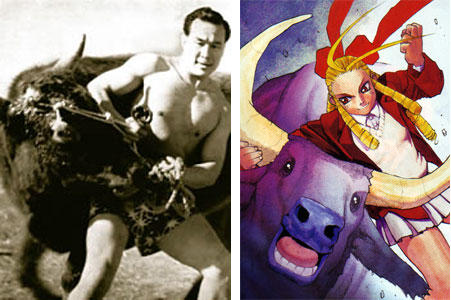
It was such a powerful story that one of Oyama's students played his master in the film
Karate Bear Fighter. Sonny Chiba appeared in several other moves based on the life of Oyama. These movies and characterizations helped shape the development of Takuma Sakazaki in the Fatal Fury and King of Fighters series.
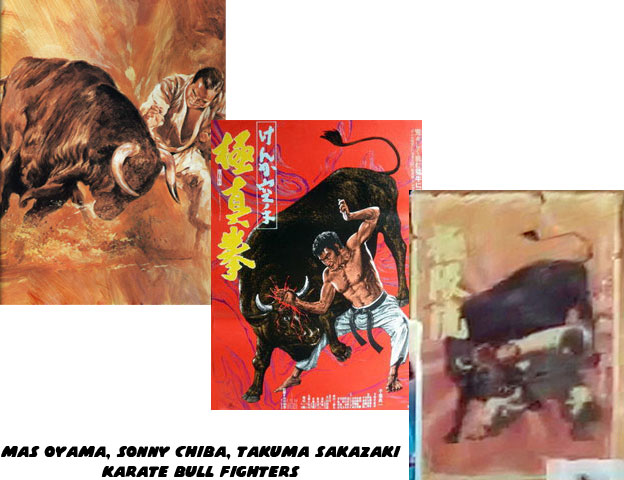
Oyama inspired millions with his exploits and made many people believe that they too could follow in his footsteps. However none have proven to be a Godhand since. This was the cautionary tale of karate, the master that never quite made it. This was the lesson and legend of Willie Williams. Some karate practitioners took Soeno's fight against a bear as a literal challenge. Willie Williams was one of those. At 6" 7" and 230lbs. of lean muscle Williams was an imposing karateka. The African-American moved to Japan to train and follow the path laid out by Oyama. He immersed himself completely in the training regiment and wanted to prove that Kyokushin was indeed the Ultimate Truth.
You can imagine that a tall black man in Japan studying karate, dressing in traditional garb, training in the traditional format was a strange sight for conservatives and traditionalists. Surely no gaijin could grasp the nuances of Kyokushin, the fighting spirit. Williams, and most Americans are want to believe that anything is possible and a form can be learned and understood by the people, not solely the Japanese. To prove the authenticity of the karate format and dispel the legends from the truth Williams and his trainers staged some fights. One pitted the man against a bear. News reporters were invited to capture
contest on film.When news of this encounter reached the states a few die-hards like
Willie Williams began training in the Kyokushin style to become fighting machines as well. Williams even staged a match against a bear for the documentary "The Strongest Karate."
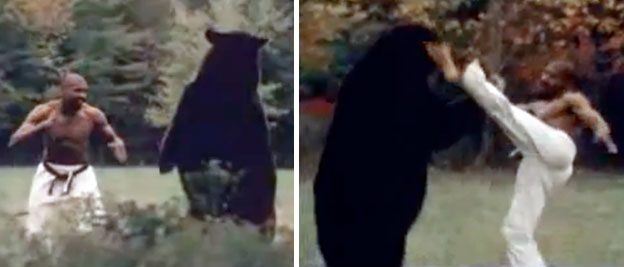
The "fight" was highly debated as the bear seemed disoriented. Critics argued that the bear was clearly drugged and possibly even declawed so that Williams wouldn't have been mauled by the animal. Despite the imposing frame that a young Williams carried his strikes seemed ineffective against the bear. The press that covered the event ended up participating is what
was called nothing more than a propaganda film. Williams and his instructor, sensei
Shigeru Oyama (no relation to Mas Oyama) spent a lot of time trying to prove the authenticity and effectiveness of the art. In 1980 he and Shigeru were suspended from the International Karate Organization Kyoukushinkaikan because of a fight they had participated in. Williams fought Antoni Inoki to a draw. Williams had suffered a broken arm and Inoki a broken rib. The legend of Inoki grew after the battle while Williams was relegated to the footnotes. It seemed that the best he could do was inspire characters for pop culture.
Marco Rodrguez (translated to Khushnood Butt for the US) for the game Garou, Mark of the Wolves was very closely modeled after Williams. To be fair he was inspired by William Oliver, Willie Williams and Charles Martin, the three black Americans better known as the Fighting Black Kings, from the 1976 documentary on the first world Kyokushin fighting tournament. Marco had immersed himself in the study of the fictional Kyokugen (extreme) form of Karate. This is the form invented by Takuma Sakazaki and passed onto his son Ryo and his friend Robert Garcia. Marco believed in the form as the absolute best and touted its superiority with a fanatical zeal in the game, his eyes welling with pride every time he thought about the art and his master. This level of passion, combined with his moves actually being solid, enamored him to gamers. The character worked abroad despite the double stigma of race and karate fool. Gamers were able to see past those conventions because he was a reliable karate-style fighter who played like the traditional Art of Fighting heroes even within a Fatal Fury title. Marco worked very well within the game as well as canon and wasn't simply a joke character for the sake of being a joke character.
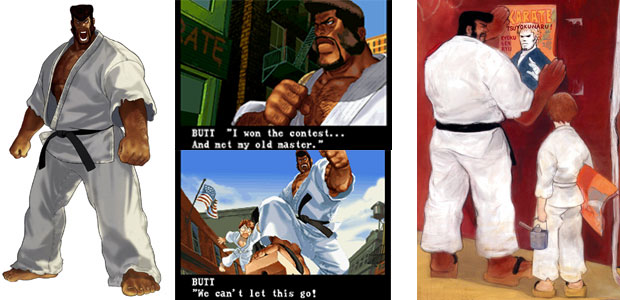
There was a world of difference between a bull and and actual predatory animal however. According to legend Oyama had once staged a battle with a bear. He did not dominate the creature and ended up fighting for his life. A version of that fight was featured in the manga and
animé series Karate Baka Ichidai.The idea of a martial artist versus a wild animal had inspired many legends, but the stories themselves were sometimes inspired by actual events. In ancient tradition the heroes of a story were the ones that fought off a colossal beast. Sometimes these animals were real and sometimes they were mythical. In ancient Greece the hero Hercules was said to have wrestler both a lion and boar with his bare hands. The fabled 12 Labors included Hercules against The Erymanthean Boar, The Cretan Bull, The Nemean Lion, The Lemean Hydra and The Cerberus. These were certainly monsters perfect for a video game. Also unlike Mas Oyama the contest was not a fight for survival but a chance for the character to cement his legendary strength.
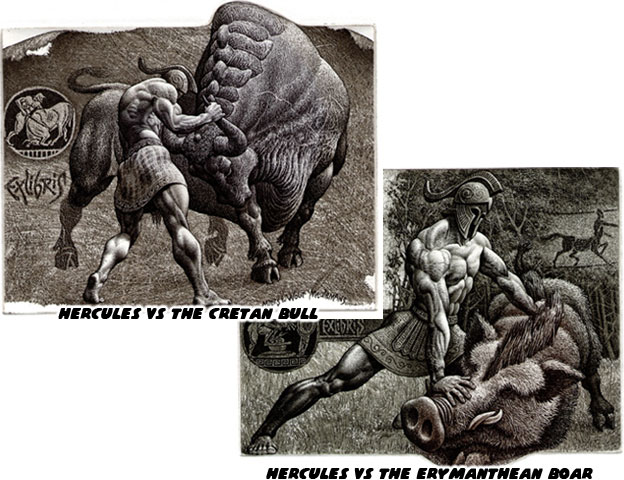
Oyama and his fans would pontificate on his karate and how it was used to defeat other fighters and other forms. Some of his lessons were based on actual encounters. He would describe in detail how his karate form was used to beat boxers and pro wrestlers from the west. These lessons would then be applied in the abstract and authors (including Oyama himself) would come up with scenarios where karate could be used against wild animals. Imagine the situation where a karate expert is ever wandering through a forest and is attacked by a wild ape. The fighter would be no match for the strength of the beast but they would be able to use their long legs to target open spots on the body. Not unlike fighting a musclebound wrestler I'm sure. The story of karate versus an ape would be used by other manga storytellers over the years. The ape would take on demonic features in many retellings and become more of a monster than wild animal when the legends became animated.
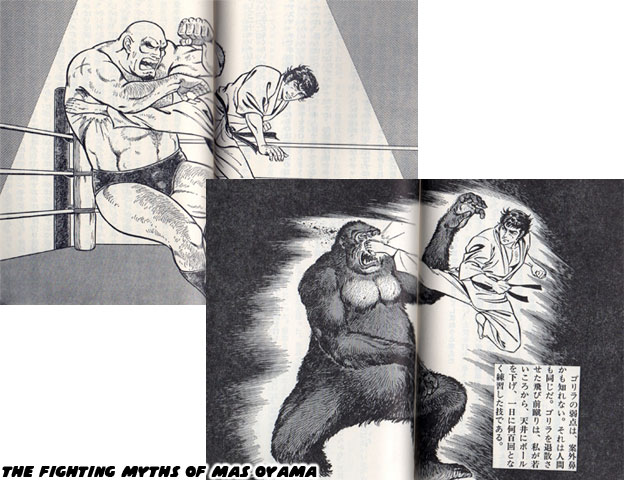
Some of the myths that Oyama shared were based on recorded history. Such as a samurai having to defend himself from a pack of wild dogs. The fighter would have to find a way to use the environment to their advantage and not allow themselves to be surrounded by the dogs. Then they would have to focus their attacks so that every strike was lethal. A miss could leave the fighter open to a counter-attack and that could be the difference between life and death. Wandering swordsmen in feudal-era Japan were sometimes targeted by bandits and these same lessons would have been used to ensure their survival. But when it came to bare handed fighting against natural predators there weren't too many success stories to rely on. Oyama had defeated bulls but he often wondered how he, or his karate form would have faired against a more aggressive predator.
It turned out that a thousand years ago there was an encounter that could go down as something too amazing to be true.
The pilgrim Wu Song was traveling through a village in China. He had stopped by an in for some rest. The villagers warned Wu that there was a man-eating tiger nearby and that it was dangerous to take a certain bridge out of town, especially once it started to get dark. After a few drinks Wu thought that it would be a good idea to take the bridge and see what happened. Sure enough the tiger was there and being courageous (or crazed with booze) Song attacked the tiger. He had a stick with him but the tiger broke that quickly. Song in a fit of rage managed to get close to the tiger and kill it with repeated blows to the head. Wu Song was a character in The Water Margin. The character was fictional but many of the men and women in the novel were inspired by actual events. It was possible that a kung-fu practitioner with more ability than sense actually did kill a tiger with his bare hands. When the writer of the Water Margin heard of the legend he figured out a way to incorporate it into the series.
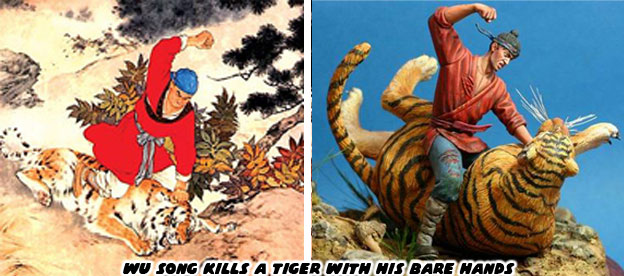
Oyama wasn't the first time that the man versus bear legend had been based on reality. The Bulgarian Dan Kolov was a wrestler and had to fight off a bear attack while he was out hunting. He lost his rifle for a moment when the bear was upon him, he grabbed and pulled at the bear with such ferocity that he pulled chunks of skin and fur off of the creature. Kolov was a self-taught catch wrestler, and circus strongman that was considered by some the greatest wrestler that ever lived. He regained his rifle after a brief struggle and killed the bear with a shot. With such a reputation he became a big draw for wrestling promoters. It was possible that the legend of Kolov had a hand in inspiring the legend of Zangief, who was known to wrestle bears in Street Fighter canon.
Domesticated bears had actually been used in some circus sideshows for over a century. The bears would usually only "wrestle" their trainers, because they were comfortable with them. Bears felt like they were playing and not actually fighting. In some rare cases a circus might let an audience member try to wrestler a muzzled bear. The bear would usually knock the person over and sit on them easily to end the match. But every now and then a story would come out where a person got the upper hand. This was the inspiration behind the Australian folk song about
William Sinclair who defeated a bear in a match in Queensland.
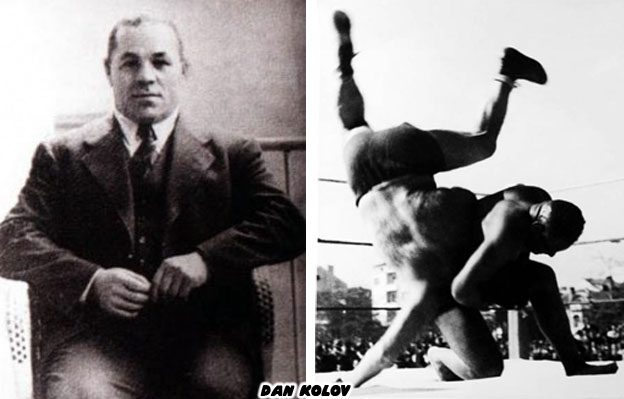
It's easy to imagine that a version of these man-vs-beast myths could end up shaping the development of various fighting games. In the early days of the genre the developers did not have to go very far to bring the legends to the game screen. In Karate Champ the designers at Data East introduced a bonus stage that had fighters kicking stacks of tile. Oyama and his karate predecessors had often given breaking demonstration to audiences wherever they went. Sometimes they broke stones, bricks and blocks of ice. Karate Champ was the first fighting game to feature the bonus level and even had players take out a charging bull with a punch or kick.
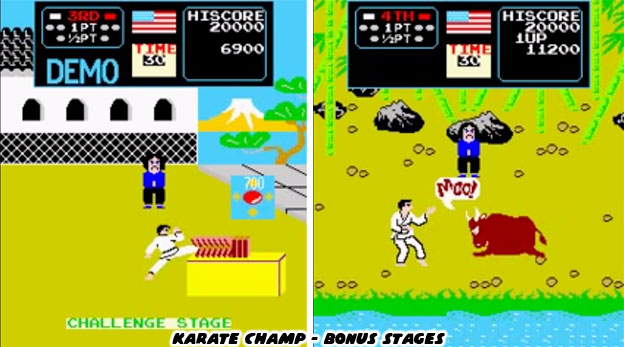
As the developers got more comfortable with the genre they began experimenting with enemy types. The early fighting games had masters of various fighting styles competing against each other. After the studios ran out of identifiable forms they started throwing in monsters, animals and even robots and aliens to keep the genre interesting. A tiger, giant falcon, and even shark
would be included in Fighting Layer, a game developed by former Street Fighter II designers.
In Battle K-Road the secret boss was named Mr. Bear. It turned out to be an actual grizzly bear and was among one of the most difficult opponents in any game. The game was over-the-top as one could imagine but it retained some charm. These types of encounters would not have been acceptable in the genre if not for people like Oyama and Kolov who actually fought the beasts and lived to tell the story.
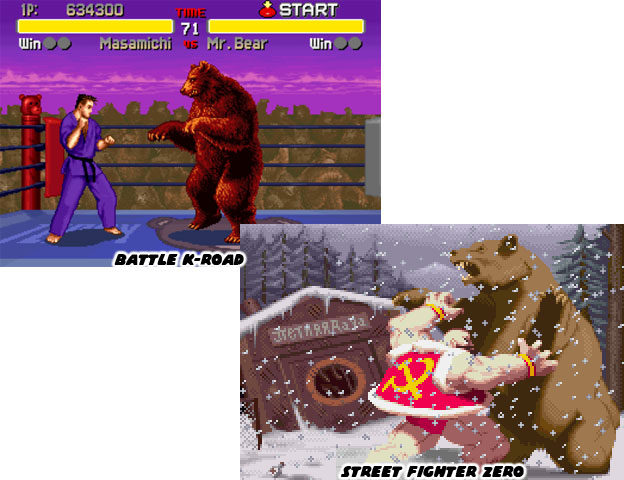
Gouki and Silber should not be confused with the previously aforementioned legends. They did not spar against wild animals with their bare hands, they hunted them down. The two could not only dominate the other fighters that they came across but also the biggest and strongest creatures in nature. In canon Gouki had killed a large bear that was the terror of a nearby forest. A young and inexperienced Ryu went out trying to kill the bear himself but was almost gutted by the creature. Gouki jumped into the fight and punched a hole through the head of the bear. He did not do it as much to save the life of Ryu but to warn him there were things in the world that should be feared and respected more than any animal.
In a similar fashion Silber traveled the globe putting down the animals he tested himself against. He showed little mercy for the other fighters he faced and was willing to put them out of their misery as well. Silber seemed to relish in his power and technique. It had been speculated that the fur on his uniform was taken from a polar bear he had killed and not from a wolf. Few aside from Silber himself knew what points around the world he had visited. Gamers were left to believe that he had wandered into the frozen arctic looking for a new challenge and had returned with the pelt after finding no suitable opponent.
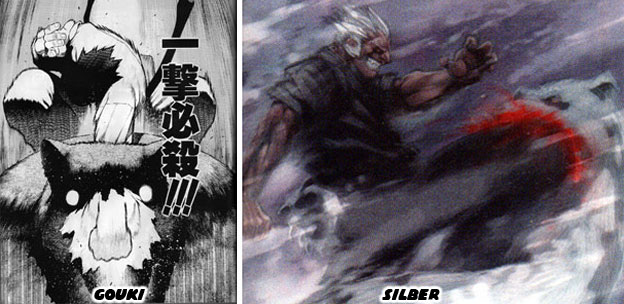
Gouki and Silber were fantastic character designs from Capcom and SNK respectively. They commanded the attention of the audience and held their interest throughout the battle. Each time they appeared in game they were treated with the same sense of awe and respect. Although they were powerful bosses and seemingly superhuman fighters they were not cheap characters from a balance perspective. They did not have attacks that were overpowered or could defeat a player with one or two hits. Even the Shun Goku Satsu at the most took 2/3 of an opponents energy and not the entire health bar. Every character in the game stood a chance against these villains provided that the player were willing to play aggressively and make few mistakes.
The physical appearance and attacks of the two bosses made them stand apart from the cast and even other villains. Yet there was a point where villains were too powerful and too evil for the genre. When pushed to the extreme ends the evil characters could break the suspension of disbelief from the gamer. Gouki had one such makeover in Street Fighter IV. It turned out that Gouki or even Shin Gouki (the white-haired variation) were not the most powerful incarnation of the character. A third form known only as Oni or Demon in Japanese was introduced by the SF IV designers. Oni was the manifestation of the Dark Hadou, or evil power which Gouki possessed, or rather which had possessed Gouki. The character grew long, spiky white hair, and a large underbite like an ogre with small tusks protruding. His skin even went from clay-colored to blue. Gouki no longer had the elements of a humanized lion but instead the wholesale appearance of a Nio, or protector of the underworld.
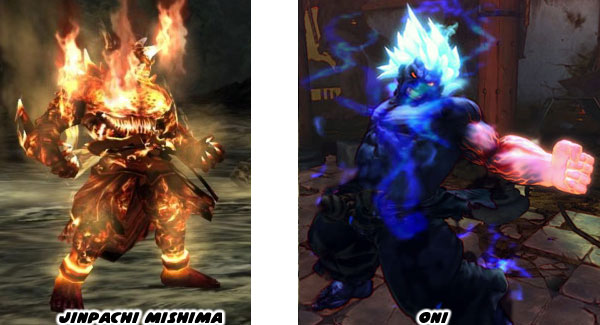
In Tekken a similar character had been unveiled as well. Jinpachi Mishima was a warlord and founder of the Mishima clan. He had spent a few decades locked under the Mishima castle. It was a sentence in Hell but Jinpachi had become so powerful that he broke out and returned to the real world. Oni and Jinpachi were so overpowered that seemingly no other character in the series could have even hurt them. Capcom had ignored all of the elements that made Gouki such an interesting character. They moved right into the realm of the absurd with Oni. The same thing could be said for Namco and the Tekken universe which Jinpachi now occupied. The two studios had been skirting the line between what was good character design, what was bad and what was simply pandering to the masses. Before Oni and Jinpachi the major challenge for the studios was showing gamers the creation of a villain right in the middle of a series. The next blog will look at how Capcom used the template of Gouki to rewrite the Street Fighter mythology. As always if you enjoyed this blog, and would like to sponsor me
please visit my Patreon page and consider donating each month, even as little as $1 would help make better blogs and even podcasts!














No comments:
Post a Comment